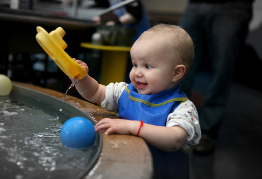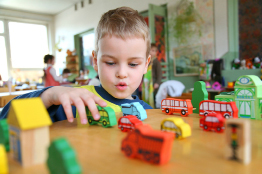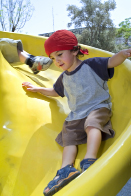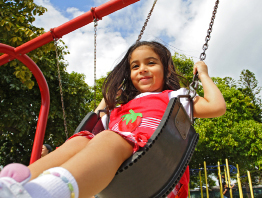Session 4
| Site: | MoodleHUB.ca 🍁 |
| Course: | Early Learning and Child Care 30 Modules |
| Book: | Session 4 |
| Printed by: | Guest user |
| Date: | Thursday, 18 December 2025, 10:34 AM |
Description
Created by IMSreader
1. Session 4
Session 4: Becoming an Early Childhood Professional

© matka_Wariatka/shutterstock
Introduction
This is the last session of CCS3150: Early Learning and Child Care 5. In this final session you will have the opportunity to think back over the course, to reflect on what you have learned, and to consider how what you have learned comes together as the daycare team plans the program for children. You will learn about the importance of continuing your education as an early childhood professional.
1.1. Get Focused
Session 4: Becoming an Early Childhood Professional
Getting Focused Activity: Balancing the Day to Meet Children’s Needs
Just like adults, children need time—time alone, time together, active time, and quiet time. When children have predictable schedules, they feel more secure. Predictable does not mean rigid—schedules need to allow for some individual differences in children.

© emin kuliyev/shutterstock
As a member of the early childhood professional’s team, you will likely be involved or assist in the planning of activities at the centre.
If you were able to plan a perfect day for yourself, what would be the key events you would be sure to include? Brainstorm a list on a piece of paper. Your ideas cannot include things like magical speed travel; instead, your ideas should include activities that are potentially possible to achieve within the day.
Did your list include a time to rest and relax, a time to be alone, a time to be with friends or family, and a time to get something accomplished?
Planning is important because if we don’t plan how to use our time, we often end up not using time well.
Use the Getting Focused Activity: My Perfect Day chart to plan your ideal 24-hour day from the activities you brainstormed above.
When you have completed the chart, share your plan with a learning partner and compare your days. Use the following questions to start a discussion:
- How are your days similar?
- How are your days different?
- Do your days have a lot of variety of activities?
- Were you able to schedule all the activities you wanted to accomplish within the time?
1.2. Inquiry 1
Session 4: Becoming an Early Childhood Professional
Inquiry 1: Thinking About Time

© Losevsky Pavel/shutterstock
When planning an activities program for a child care centre, you need to include some of the kinds of time that are described below. Just like you need alone time, together time, and activity time during the day, so do children.
Activity time refers to free play, playtime, or learning centre time, in which children make choices about what they play with. Preschool children absolutely need large blocks of time for this kind of play. Opportunities for development of fine motor, gross motor, intellectual, creative, social, and language skills should be provided. In each activity time block, it is important to balance between activities that need close supervision and those that the children can do with less direct supervision from an adult.

© matka_Wariatka/shutterstock

© paulaphoto/shutterstock

© Noam Armonn
/shutterstock
Large-group activities include circle time, story time, music time, and sharing time. These activities are directed by the teacher, but the children need to be actively involved. Activities should be relatively short to account for short attention spans.
Small-group activities include activities that allow a caregiver to provide closer attention to each child. These activities can include stories, songs, or a science activity.
Outdoor activities include playtime outside—this time should be a large part of the children’s schedule. Free play, large-group, and small-group activities must be incorporated into this time. Outdoor play should facilitate a wide range of gross motor activities, social skills, and intellectual and creative development.
Routines are the regular, predictable behaviours that are repeated every day: arriving and departing, cleaning up the playroom and playground, transitions, eating, resting, washing, and toileting. These routines provide valuable learning experiences.

© matka_Wariatka/shutterstock

© Felix Mizioznikov/shutterstock
Guidelines for Program Planning
Some guidelines help child care staff combine these elements of the program in ways that are effective and meet children’s needs. Most of the guidelines are about balance.
When you are planning your program, keep these ideas in mind:
- Balance active times and quiet times. Provide opportunities to be physically active after a quiet time and to slow down after a period of high activity. Remember that children need time and support in making the transition between active and quiet times.
- Balance child-initiated and teacher-initiated activities. Some children need to expend much more physical energy than others. Making adjustments is always necessary. Guidelines for planning include balancing quiet and active times. You need to make sure that most of the activities are the children’s choices, require the children’s initiative, and are supported by the adult.
- Balance between developmental levels of children and activities. Infants and toddlers need much more time for routine care activities and have very short attention spans. For a three-year-old child, a five-minute small-group activity may be sufficient, whereas a five-year-old may want 20 minutes for an activity.
- No time should be wasted. Sitting idly on chairs waiting for snacks, lining up for the washroom, or waiting a long time to use a toy or equipment is wasted time that could be turned into learning time. If these times are used for conversation, singing, or developing self-help skills, the time is not wasted.
1.3. Learning Activity 1
Session 4: Becoming an Early Childhood Professional
Learning Activity 1: An Activity Plan
Focus
In the Getting Focused activity for Session 4, you took some time to plan your perfect day. In this learning activity your challenge is to plan a day for a child care centre using children aged four and five years as your target audience.
Directions
For this activity, it might be worthwhile to spend some time in a child care facility observing the daily routines and activities, as well as taking time to discuss talk to caregivers and gain ideas from them.
Things to include in your day plan for a child care centre are the following:
- arrival
- time for routines, such as toileting, snack, and lunch
- time for downtime activities; for example, quiet time
- indoor and outdoor play, including
- large-group activities, such as circle time, story time, music time, sharing time
- small-group activities, such as stories, songs, science activities
- student-initiated (or selected) activities that are supported by the teacher
- departure
Do not forget to include any advance preparations you might need to make or supplies needed for your activities.
Remember to provide the opportunity to be physically active after a quiet time and to slow down after a period of high activity.
Complete Learning Activity 1: An Activity Plan.
 Checking In
Checking In
Save this project in the appropriate folder on your computer. Refer to the Student Rubric for Learning Activity 1: An Activity Plan for self-assessment. Your teacher may use a rubric similar to this for evaluation.
1.4. Learning Activity 2
Session 4: Becoming an Early Childhood Professional
Learning Activity 2: Working as a Team
Focus
As a caregiver in a child care centre, you have a role as a member of the child care team. You will have to work with others as a co-worker and as an employee.
As a part of the team it is up to you to show respect to other staff members. You can show respect in the following ways:
- Take time to listen to ideas, even when you are busy.
- Recognize the accomplishments of others.
- Encourage colleagues to solve problems.
- Show interest in staff initiatives.
- Maintain confidentiality.
- Respect the rights of others.
- Maintain discussions in a positive way, even when you disagree.
- Value others’ input and opinions.
- Be considerate of team members.
Directions
Complete Learning Activity 2: Working as a Team.
 Checking In
Checking In
Save your responses in your course folder. Your teacher may ask to see your responses.
1.5. Session 4 Summary
Session 4: Becoming an Early Childhood Professional
Session Summary
Much learning about children occurred in this course. All of our knowledge about children is used when planning appropriate activities for children.
Guidelines for planning include balancing quiet and active times and making sure that most of the activities are the children’s choices. When planning activities, it is important to create activities that require the children’s initiative and are supported by the adult.
Large-group and small-group activities, which are adult initiated, are important parts of the program planning as well, but should be limited in time.
Sometimes it is difficult to know how to implement new ideas in a work environment. As a child care staff member, you are also a team member. When you notice the need for change, it is important to use constructive problem-solving techniques. The group, as a whole, must define the problem, suggest a variety of possible solutions, evaluate the solutions, and then select a workable solution. In this way, everyone participates in solving problems. Draw from the experience of the team and work together.
Session Quiz
There is no quiz for this session.
 Checking In
Checking In
It is now time to fill in your Course Completion Checklist if you haven’t already. Continue on to the course summary for your final learning activity.